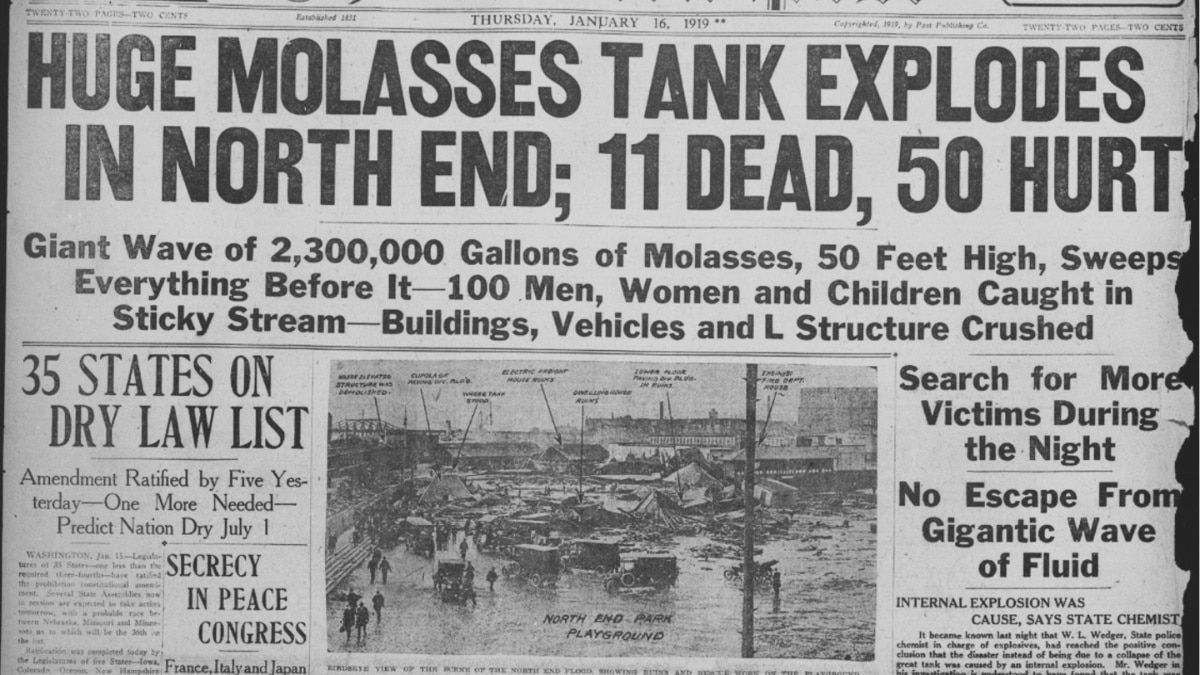The Great Boston Molasses Flood Of 1919: US's Bitter History With A Sweet, Sticky Liquid
In 1919, a ruptured molasses tank in Boston unleashed a tsunami of syrup, killing 21 and injuring 150. Read about the bizarre molasses flood below.

On January 15, 1919, Boston's North End neighbourhood in the US was transformed into a scene straight out of a disaster movie that one might have mistaken for the ocean wreaking havoc on the town. But instead of waves of water, it was a tsunami of molasses that caused widespread destruction. That's right! The sweet syrup claimed 21 lives that fateful day in the 'Little Italy' of America.
The Great Molasses Flood, as it would come to be known, was not just a sticky situation. It was a catastrophe that left 21 people dead and 150 injured — all thanks to a poorly constructed tank that failed to defy physics.
ALSO READ | The Great Emu War Of Australia — When Guns Lost To Flightless Birds

The Great Molasses Flood of Boston: A Sweet Disaster
The day began like any other in the North End locality in the state of Massachusetts, with residents enjoying a warm winter day. But at approximately 12:30 PM, the peace was shattered by a low rumble that many initially mistook for a passing train. Moments later, the ground shook as the massive tank — over 50 feet high — exploded under pressure, unleashing a wave of 2.3 million gallons of industrial molasses that surged through the streets at an astonishing speed of 35 miles per hour. The waves caused by the viscous liquid crashing to the ground reportedly caused 25-foot waves.
Witnesses described the scene as surreal. The sweet gooey liquid engulfed everything in its path, knocking buildings off their foundations and trapping unsuspecting pedestrians and horses alike. One can only imagine the sight as firefighters and residents were swept away by the syrupy flood, with some even being hurled into Boston harbour by the force of the wave.
ALSO READ | Erfurt Latrine Disaster: When 60 Noblemen Plunged To Their Deaths In Human Excreta
What Caused The Boston Molasses Flood?
The disaster was caused by engineering failures. The tank had been constructed hastily using subpar materials and was notorious for leaking even before its catastrophic failure. Local children had been known to collect the sweet syrup oozing from its seams. Investigations revealed that the tank's walls were far too thin to withstand the weight of the molasses it contained, leading to an inevitable disaster when a fresh shipment of warm molasses was added shortly before the explosion.
While the day was already warm, the warm molasses from the fresh shipment mixed with the cold molasses in the tank and caused a thermal expansion, leading to the explosion.
In hindsight, the fermentation unit and the tank should not have been set up in the densely populated neighbourhood. The tank stood there for four years before its collapse. Many media sources reported that the tank had even been painted brown from blue to hide the leaking molasses.
In the aftermath, while many pointed fingers at anarchists supposedly trying to sabotage the tank, investigations ultimately laid blame on the negligence of the Purity Distilling Company, a subsidiary of US Industrial Alcohol, which was in charge of the tank. A court ruling in 1925 found them liable for damages amounting to $1 million (equivalent to over $18 million today), which paved the way for stricter construction regulations across the country.
ALSO READ | The Dancing Plague of 1518: When People Dropped Dead Dancing... Literally!
Boston Molasses Flood Aftermath
Cleanup efforts were Herculean as workers spent months removing the sticky residue from streets and buildings. The smell of molasses lingered in Boston for years, becoming an odd reminder of this bizarre tragedy. Residents reported that on warm days, they could still catch a whiff of molasses wafting through their neighbourhoods.





































